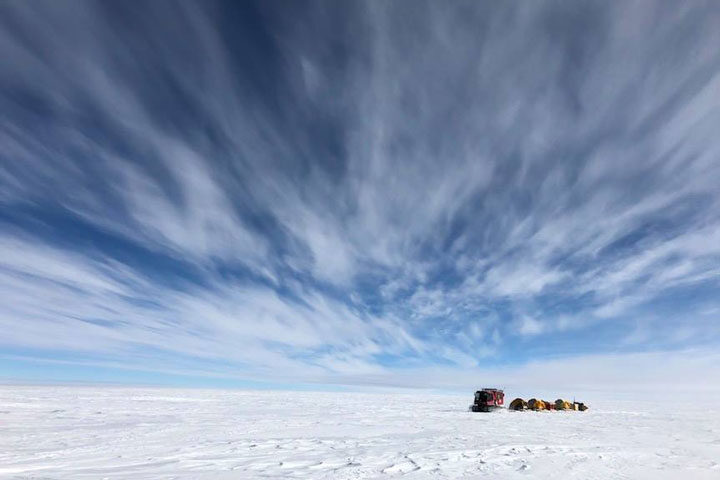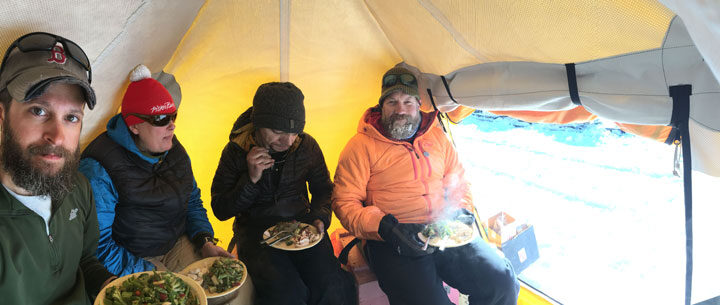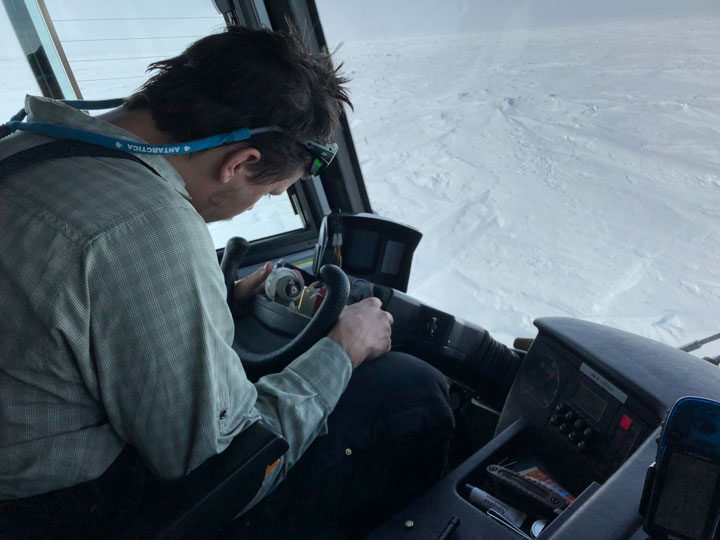As you start exploring the ICESat-2 data – released to the public today! – spare a thought to the team that went to the end of the Earth to check it! This winter, we successfully completed the second Antarctic 88S Traverse, collecting highly accurate GPS elevation data for direct comparison with ICESat-2. The comparison provides us with the best means of assessing one of NASA’s newest satellites!

Over 12 days, we drove ~750 km (~450 mi) in slow-moving tracked vehicles called PistenBullys. When I got back from Antarctica, people often asked about the weather: In that region, the weather is generally pretty constant. We had temperatures that were approximately -15C (5F) with light winds. Once, when it got really windy — about 20 knots — the traverse person in charge of safety, Chris, pulled out a Kestrel, or a tool to measure windspeed. He translated that to a windchill temperature, and informed us that it was about -50C (-58F). As luck would have it, that was one of the days that the NASA folks (myself and Adam) had to work outside for a few hours. At least we had warm vehicles to jump into when the outside work was done.
People also asked what we ate: We took turns cooking in the evenings, and we often named our entrees, such as Penguin Noodle (it was chicken) or “Just Like the Olive Garden.” Some folks get imaginative in their cooking, and Chris often prepared multi-course feasts that were always a hit and often copied on subsequent evenings. For the second straight year, I was the worst cook. On the nights that I cooked, the traverse mechanic, Matt, would prepare himself an afternoon burrito, cooked on the PistenBully exhaust pipe (1 hour cook time).

People that are familiar with this type of field work often asked if we encountered any problems along the way. Overall, we had only minimal problems – small things that could be handled rather quickly. And that’s pretty good for a deep-field Antarctic research project. However, the main issue that we did encounter was one of the vehicles really, really struggling with respect to power. That meant that at times, our already slow traverse (~10 km/hour, or ~6 mi/hour) was made even slower (~5 km/hour, or ~3 mi/hour). Our mechanic Matt worked hard to understand the root cause. And all I could do for him was make an 80s playlist while he drove and thought about the problem. Only after the traverse, in a warm garage with the PistenBully hooked up to a diagnostic tool, was he able to determine that it was a bad ECM. I have no idea what that means. But I like that Matt does. Figuring out the problem suggests that these vehicles will be good to go for next season!

But the most frequent question that people asked this season pertained to the government shutdown this winter: Folks wanted to know whether we were affected, and how were we able to move forward with the field plan. It was quite straightforward. First, neither the traverse researchers (me and Adam) nor the science support staff (Matt and Chris) were civil servants. That helped a lot. But more importantly, following the government shutdown of 2013, which had a major impact on Antarctic research, the National Science Foundation put measures in place to ensure that their busy summer field season (usually from about early October to late January) was uninterrupted in the event of a shutdown during future research seasons. The only real impact of the shutdown on our project was that our blogs were interrupted! We finished our Antarctic adventure back in late January but decided to post a couple blogs summarizing the field season in sync with the public release of the ICESat-2 data – so stay tuned for the next one coming later this week!
And if you’d like to check out ICESat-2 data, visit the NSIDC site at: https://nsidc.org/data/icesat-2



